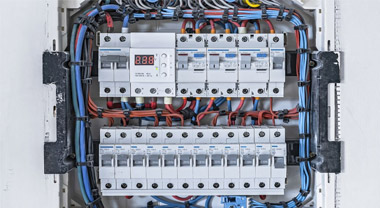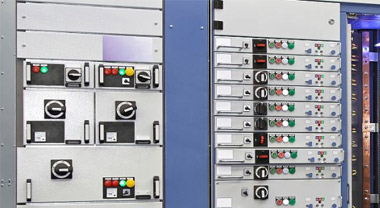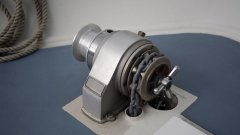What does a circuit breaker do and how does it work?
1. Introduction
A circuit breaker is an essential safety device used to protect electrical systems from damage caused by overcurrent, short circuits, or electrical faults. These critical devices play a crucial role in preventing potential hazards, such as fires and damage to electrical equipment. This article will provide an in-depth look at the fundamental functions of a circuit breaker, its various components, how it operates, and its importance in modern electrical systems.
2. Basic function of a circuit breaker
2.1. Definition of a circuit breaker
A circuit breaker is an automatically-operated electrical switch designed to protect an electrical circuit from damage caused by excess current. It detects fault conditions, such as overcurrent and short circuits, and interrupts the electrical flow to prevent hazards. Circuit breakers are typically found in electrical distribution panels, providing protection for individual circuits and connected devices.
2.2. The purpose of circuit breakers in protecting electrical circuits
Circuit breakers are essential in protecting electrical circuits because they automatically break the flow of current when it exceeds a specified level. This ensures the safety of both electrical equipment and users by preventing potential hazards, such as fires, damage to equipment, or electrocution. They also allow for easy identification and isolation of faults in electrical systems, enabling efficient maintenance and repair.
2.3. Types of circuit breakers
There are four primary types of circuit breakers, each utilizing different methods for detecting and responding to fault conditions:
- Thermal circuit breakers
- Magnetic circuit breakers
- Hybrid circuit breakers (Thermal-Magnetic)
- Electronic circuit breakers
3. Circuit breaker components
3.1. Structure of a circuit breaker
A typical circuit breaker consists of the following components:
- Switch: Allows for manual operation of the breaker, enabling users to turn the circuit on or off.
- Actuator: A mechanical component that automatically trips the breaker when a fault is detected.
- Bimetallic strip or solenoid (for thermal and magnetic breakers): These components detect overcurrent events and initiate the tripping process.
- Electronic components (for electronic breakers): These components monitor the electrical current and respond to overcurrent events with precise timing.
3.2. Connection to the electrical circuit
Circuit breakers are connected in series with the electrical circuit they protect. When a circuit breaker trips, it breaks the circuit, disconnecting the flow of electricity to the devices connected to that circuit.
4. How circuit breakers work
4.1. Detecting an overcurrent event
4.1.1. Thermal circuit breakers
Thermal circuit breakers use a bimetallic strip to detect overcurrent events. The bimetallic strip consists of two different metals bonded together, each with a distinct thermal expansion coefficient. When the current in the circuit exceeds the rated value, the bimetallic strip heats up and bends due to the difference in expansion rates between the two metals. This bending motion triggers the actuator, which then trips the breaker.
a. Bimetallic strip operation
The bimetallic strip's temperature is directly proportional to the current flowing through the circuit. As the current increases, the strip becomes hotter and bends more, eventually reaching a threshold that causes the breaker to trip.
b. Time delay for tripping
Thermal circuit breakers typically have a built-in time delay to prevent nuisance tripping caused by temporary current surges. This delay allows the breaker to withstand a brief overcurrent event without tripping, ensuring uninterrupted operation for connected devices.
4.1.2. Magnetic circuit breakers
Magnetic circuit breakers use a solenoid (a wire coil) to detect overcurrent events. When the current in the circuit exceeds the rated value, the magnetic field generated by the solenoid increases, attracting a movable iron core. This motion triggers the actuator, which then trips the breaker.
a. Solenoid operation
The strength of the magnetic field generated by the solenoid is directly proportional to the current flowing through the circuit. As the current increases, the magnetic field becomes stronger, eventually reaching a threshold that causes the breaker to trip.
b. Instantaneous tripping
Magnetic circuit breakers typically provide instantaneous tripping, meaning they trip as soon as an overcurrent event is detected. This feature makes them particularly effective in protecting against short circuits and sudden current surges that may pose a risk to electrical equipment.
4.1.3. Hybrid circuit breakers (Thermal-Magnetic)
Hybrid circuit breakers, also known as thermal-magnetic breakers, combine the features of both thermal and magnetic circuit breakers. They utilize a bimetallic strip for detecting prolonged overcurrent events and a solenoid for detecting short circuits and sudden current surges.
a. Combination of bimetallic strip and solenoid
The combination of a bimetallic strip and solenoid allows hybrid circuit breakers to provide both time-delayed and instantaneous tripping, ensuring a robust response to a wide range of fault conditions.
b. Advantages and disadvantages
Hybrid circuit breakers offer the advantages of both thermal and magnetic breakers, making them versatile and suitable for various applications. However, they may also be more complex and expensive than single-function breakers.
4.1.4. Electronic circuit breakers
Electronic circuit breakers use electronic components to monitor the electrical current and detect overcurrent events. They often employ microprocessors and sensors to measure the current and compare it to a predefined threshold.
a. Detection of overcurrent using electronic components
Electronic circuit breakers can detect overcurrent events with high precision and accuracy, allowing them to respond quickly and effectively to faults.
b. Customizable response times
One key advantage of electronic circuit breakers is their ability to offer customizable response times, making them suitable for a wide range of applications. Users can often adjust the trip settings to match the specific requirements of their electrical system.
4.2. Tripping the circuit breaker
4.2.1. Mechanism of breaking the electrical circuit
When a circuit breaker detects an overcurrent event, the actuator triggers a mechanism that separates the contacts within the breaker. This breaks the electrical circuit, disconnecting the flow of electricity and protecting the connected devices.
4.2.2. Indication of a tripped breaker
Circuit breakers often feature visual indicators that show their current state. When a breaker has tripped, the switch may move to a middle position, or a visible red flag may appear. This allows users to easily identify the source of a fault and take appropriate action.
5. Resetting a circuit breaker
5.1. Procedure for resetting a tripped breaker
After resolving the issue that caused the breaker to trip, users can reset the circuit breaker by switching it back to the "on" position. For some breakers, it may be necessary to first move the switch to the "off" position before switching it back on.
5.2. Safety precautions during the reset process
When resetting a circuit breaker, it is essential to exercise caution and follow safety procedures. Ensure that the cause of the tripped breaker has been resolved, and avoid touching any exposed wiring or components while resetting the breaker. If the breaker continues to trip after being reset, contact a professional electrician for assistance.
6. Importance of circuit breakers in modern electrical systems
6.1. Protection of electrical equipment
Circuit breakers play a vital role in safeguarding electrical equipment from damage caused by overcurrent, short circuits, or other faults. By quickly interrupting the flow of electricity, they minimize the risk of equipment failure and costly repairs.
6.2. Prevention of electrical fires
Circuit breakers help prevent electrical fires by cutting off the flow of electricity in the event of an overcurrent or short circuit. These faults can generate excessive heat and potentially ignite flammable materials. By swiftly responding to fault conditions, circuit breakers play a critical role in maintaining electrical safety and preventing fires.
6.3. Safety for electrical system users
Circuit breakers ensure the safety of those using electrical systems by quickly isolating and disconnecting faulty circuits. This helps reduce the risk of electrocution and other electrical accidents, providing a safer environment for users.
7. Conclusion
Circuit breakers are essential components of modern electrical systems, providing protection against overcurrent events, short circuits, and other electrical faults. With various types of circuit breakers available, including thermal, magnetic, hybrid, and electronic, these devices offer versatile solutions for a wide range of applications.
Their ability to automatically detect and respond to fault conditions makes circuit breakers critical for ensuring the safety of electrical equipment and users. By quickly interrupting the flow of electricity during an overcurrent event or short circuit, they help prevent costly equipment damage and electrical fires.
In conclusion, circuit breakers play an indispensable role in maintaining electrical safety and protecting valuable equipment. It is essential to choose the appropriate type of circuit breaker for your specific application and ensure it is properly installed and maintained to maximize its effectiveness and ensure reliable operation.




